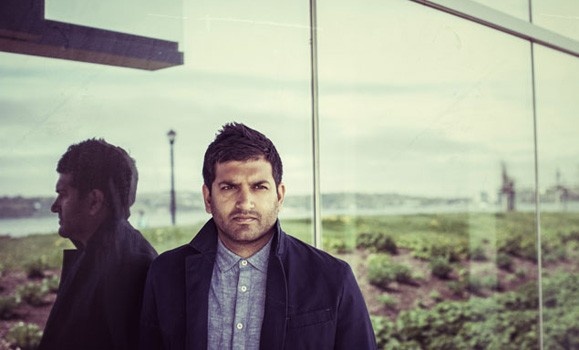As we all know, Nova Scotia gets some pretty extreme weather at times ‚ÄĒ especially where precipitation is concerned. Buildings here are for the most part designed to keep out the weather as much as possible.
But imagine what possibilities could be opened up if we found a way for our architecture to use that extreme weather, rather than just shelter us from it.
That‚Äôs the direction AVĺ„ņ÷≤Ņ Architecture instructor and alumnus Omar Gandhi‚Äôs research has taken, and his out-of-the-box thinking won him the prestigious . The prize recognizes outstanding achievement in Canadian architecture and is awarded each year to a promising young Canadian architect by the Canada Council of the Arts.
Gandhi, who founded his firm Omar Gandhi Architect Inc. a mere four years ago, was named among the 2014 top 20 young architects worldwide in Wallpaper* magazine, and has won two Lieutenant Governor’s Design Awards for Architecture.
Gandhi joins an elite roster of past winners, including many Dal alumni. In fact, a quarter of all the Professional Prix de Rome recipients since 2000 have been graduates of Dal’s School of Architecture.
Buildings integrated with environment
Inspired by Nova Scotia‚Äôs extreme weather, Gandhi says his studio aims to have buildings ‚Äúevolve beyond the role as barriers against the elements, towards a more integrated model wherein the elements form part of the architecture itself.‚ÄĚ The studio draws from traditional methods of construction as well as contemporary means in the hopes of evolving its methodology, ‚Äútowards a climatically-integrated, regionally-inspired architecture,‚ÄĚ he says.
The $50,000 prize will help Gandhi carry out this ambitious project. To begin with, he will spend some time investigating ‚Äúthe potential in emulating the forms and structures for water management as seen in the natural environment,‚ÄĚ he says. The knowledge gained from this research will allow Gandhi to begin work on the next step: ‚Äúformulating a method for diverting, mitigating and integrating precipitation into the architectural form.‚ÄĚ
Gandhi will work with Professor Roland Hudson, who specializes in parametric modeling and generative design, in Bogota, Colombia. While in Colombia, Gandhi will also visit what is thought to be ‚Äúthe wettest region on the planet‚ÄĚ: the Quibdo and Andagoya regions. There, he will analyze regional architectural responses to the climate.
Subsequently, Gandhi will visit various locations in the UK and the US, where he intends to meet with experts in both architecture and sustainability. In these locations he says he will be ‚Äúexposed to a variety of regionally specific techniques,‚ÄĚ which will enable him to ‚Äúdefine a more integrated relationship between Canadian climates and Canadian architecture.‚ÄĚ
Gandhi is honoured to have won the Professional Prix de Rome this year: ‚ÄúThis opportunity will provide us with the tools we need to truly redefine our regional architecture towards a sustainable and experientially expressive integration with the climate and landscape.‚ÄĚ
Check out Gandhi’s stunning work .

